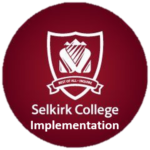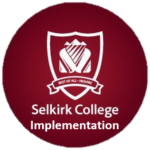12 Readiness Assurance Process

The Readiness Assurance Process (RAP) can be separated into distinct phases and begins with the pre-class preparation. It then continues with the synchronous class time and includes the Individual Readiness Assurance Test (iRAT), the Team Readiness Assurance Test (tRAT), readiness assurance test appeals, and concludes with a clarification lecture. The RAP is designed to consolidate the content acquisition that occurred during the preparatory phase and provides the foundation for the team application activities.
It should be noted that it is not recommended to conduct the iRAT and tRAT portion of this phase more than approximately seven times over the duration of a course, so there may be some adaptations required depending on the number of learning modules (Michaelsen & Sweet, 2008; Sibley & Ostafichuk, 2015).
1) Individual Readiness Assurance Test (iRAT)

On class days that a RAP is being conducted, the IRAT is the very first event of the class, even before fielding questions about the content covered in the preparation materials. It is the obligation of the student to arrive prepared to participate.
The IRAT is a short quiz of approximately 10-20 well-constructed questions, usually selected response items (multiple-choice). It should be formative in nature in that they are designed to provide early and frequent feedback with low stakes summative scoring. This is completed individually with deferred feedback, designed to assess content understanding and light application (Michaelsen & Sweet, 2008; Sibley & Ostafichuk, 2015).
2) Team Readiness Assurance Test (tRAT)

The TRAT immediately follows the IRAT and is the exact same quiz, but completed collaboratively in the assigned teams. Here, students discuss their responses with the goal of arriving at consensus to answer the questions with adaptive feedback.
Research has shown that an initial tendency is for the team to resolve disparate opinions with a majority rules vote. As the team dynamics evolve, however, previously reserved or deferential students will often begin to voice their opinions more assertively and stand fast. It is in this phase of team evolution that the zone of proximal development begins to expand (Sibley & Ostafichuk, 2015).
3) Appeals
Following the IRAT and TRAT components of the RAP, students are encouraged to appeal the quiz questions that they got wrong but felt were inaccurate or poorly worded. In keeping with the concept that the students are partners in their learning, the appeals process encourages students to revisit the material and proactively challenge the instructor. When there is a small grade associated with the RAP, students are usually eager to ensure that they are awarded all points that they feel they deserve.
Appeals are typically submitted in writing following the TRAT on a team by team basis, but may be done through discussion at the instructor’s discretion. Appeals to the accuracy of the content/correctness of the question must be supported with citations from the pre-class or other material. Appeals on the clarity of the wording of the question must be accompanied by a revision of the question to make it more clear. Appeals offer the students an opportunity to revisit the materials and consolidate content that was perhaps unclear. The instructor will need to review the appeal and make a decision on whether or not to grant it. If granted, the team that submitted the appeal will receive the points associated with that question if they got it wrong (Sibley & Ostafichuk, 2015).
4) Clarification Lecture
The clarification lecture does not review every question in the RAP quiz. Rather, it seeks to offer focused feedback from the instructor and clarify any uncertainties that arise from the RAP. In general, it appears to be a “mini” lecture that is focused and short, covering vital information only. This is also an opportunity to address more advanced concepts if relevant to the learning module (Michaelsen & Sweet, 2008; Sibley & Ostafichuk, 2015).
A 4 stage process that occurs at the beginning of a TBL module designed to prepare students for the learning and assessment activities to come by ensuring the foundational content from the pre-class preparations can be remembered, understood and applied to some degree.
The RAP consists of:
IRAT
TRAT
Appeals
Clarification lecture
The first step in the Readiness Assurance Process (RAP).
A short (10-20 question) quiz that draws on content from the Pre-Class Preparation to support preparation and accountability, and provide formative assessment about student readiness.
Formative assessment refers to a variety of methods of collecting detailed information about student learning and implement strategies to augment and further that learning while it is happening. If there is a grade attached to a formative assessment, it is usually low stakes.
The process of appraising for the purpose of providing feedback for learning and performance improvement. In general, is an ongoing and interactive process with low or no stakes events.
"When the chef tastes the soup"
Students must enter an answer to each question and then submit the entire quiz, before anything is graded or they get any feedback.
Immediately follows the IRAT.
The exact same quiz completed collaboratively in teams to increase the Zone of Proximal Development and learning "nodes" that a student has in their network.
Provides immediate feedback on responses to provide formative feedback.
Allows students to have multiple attempts at the question before moving on to the next question. Points are deducted for each incorrect answer until the correct answer is selected and/or the score for that item is zero. This incremental point loss can be facilitated with TBL proprietary scratch cards or on Moodle in the Selkirk Implementation section: TRAT


Feedback/Errata